
Sundew
The Sundews (Drosera rotundifolia) comprise one of the largest genera of carnivorous plants, with over…
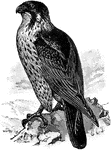
Duck Hawk
The Peregrine Falcon (Falco peregrinus), also known simply as the Peregrine, and historically as the…

Bonnethead Shark
The Bonnethead Shark (Sphyrna tiburo) is a small shark in the Sphyrnidae family of hammerheads.
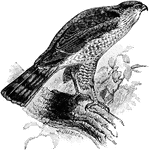
Sharp-Shinned Hawk
The adult female Sharp-Shinned Hawk (Accipiter striatus). The "Sharpie" is a small hawk in the Accipitridae…
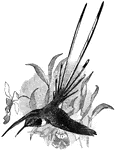
Peruvian Sheartail
The Peruvian Sheartail (Thaumastura cora) is a hummingbird in the Trochilidae family of hummingbirds.
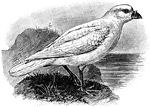
Snowy Sheathbill
The Snowy Sheathbill (Chionis alba) is a bird in the Chionididae family and is Antarctica's only permanently…

Sheep Bot Fly
The adult Sheep Bot Fly (Oestrus ovis) is a fly in the Oestridae family of bot flies and is known as…

Sheep Bot Fly
The adult Sheep Bot Fly (Oestrus ovis) is a fly in the Oestridae family of bot flies and is known as…
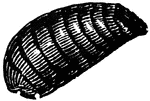
Sheep Bot Fly
The enclosed puparium of the Sheep Bot Fly (Oestrus ovis) is a fly in the Oestridae family of bot flies…
Sheep Bot Fly
The full grown larva of the Sheep Bot Fly (Oestrus ovis) is a fly in the Oestridae family of bot flies…

Sheep Bot Fly
The full grown larva of the Sheep Bot Fly (Oestrus ovis) is a fly in the Oestridae family of bot flies…
Sheep Bot Fly
The young larva of the Sheep Bot Fly (Oestrus ovis) is a fly in the Oestridae family of bot flies and…

Sheepshead
The Sheepshead (Archosargus probatocephalus) is a fish in the Sparidae family of breams and porgies.
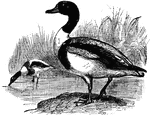
Common Shelduck
The Common Shelduck (Tadorna tadorna) is a duck distinguished by its red bill and white, brown, and…

Golden Shiner
The Golden Shiner (Notemigonus crysoleucas) is a fish in the Cyprinidae family of carps and minnows,…

Green Heron
The Green Heron (Butorides virescens) is a small wading bird in the Ardeidae family of herons, and is…
Shovelnose Sturgeon
The Shovelnose Sturgeon (Scaphirhynchus platorynchus) is a freshwater fish in the Acipenseridae family…
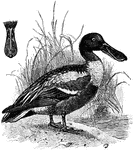
Northern Shoveler
The Northern Shoveler (Anas clypeata) is a common duck in the Anatidae family of water birds.

Common Shrew
The Common Shrew (Sorex araneus) is a small mammal common in Europe. They are in the Soricidae family…
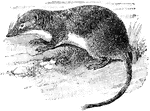
American Water Shrew
The American Water Shrew (Sorex palustris) is a small mammal in the Soricidae family of shrews that…
Shuttle Shell
"A gastropod of the family Ovulidae and genus Radius, as R. volva, of long fusiform shape, the ends…
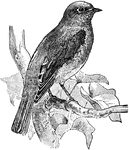
Eastern Bluebird
The Eastern Bluebird (Sialia sialis) is a medium-sized bird in the Turdidae family of thrushes.
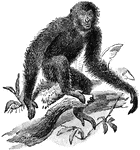
Siamang
The Siamang (Symphalangus syndactylus) is an ape in the Hylobatidae family of gibbons. It is distinguished…

Spiny Rabbitfish
The Spiny Rabbitfish (Siganus spinus) is a perciform fish in the Siganidae family of spinefoots.
Head of Ichthyophis Glutinosus
Ichthyophis glutinosus or Ceylon Caecilian is a species of amphibian in the Ichthyophiidae family. Pictured…

Legs of the Stingless Bee
Stingless bees, or simply meliponines, are a large group of bees, comprising the tribe Meliponini in…
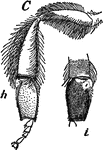
Legs of the Humble Bee
A bumblebee (or bumble bee) is any member of the bee genus Bombus, in the family Apidae. Pictured here…
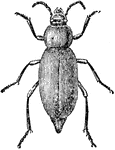
Darkling Beetle
Darkling beetles (also known as Darkening beetles) are a family of beetles found worldwide, estimated…
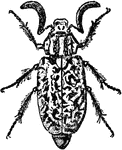
Cockchafer
The cockchafer (colloquially called may bug, billy witch, or spang beetle, particularly in East Anglia)…

Goliath Beetle
The Goliath beetles are among the largest insects on Earth, if measured in terms of size, bulk and weight.…
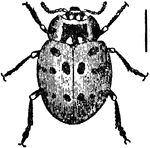
Ladybug
Coccinellidae is a family of beetles, known variously as ladybirds (British English, Australian English,…

Hispid Cotton Rat
The Hispid Cotton Rat (Sigmodon hispidus) is a small rodent in the Cricetidae family of New World rats…

Northern Whiting
The Northern Whiting (Sillago sihama) is a fish in the Sillaginidae family of smelt-whitings.

Saw-Toothed Grain Beetle
The Saw-Toothed Grain Beetle (Oryzaephilus surinamensis) is a beetle of the Silvanidae family and is…
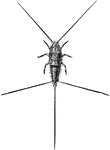
Silverfish
The silverfish (Lepisma saccharina) is a small insect of the Lepismatidae family of silverfish and firebrats.…
Atlantic Silverside
The Atlantic Silverside (Menidia menidia) is a common fish in the Atherinopsidae family of neotropical…
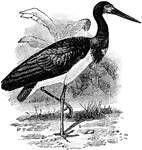
Abdim's Stork
The Abdim's Stork (Ciconia abdimii) is a large bird in the Ciconiidae family of storks.
Snubnosed Eel
The Snubnosed Eel (Simenchelys parasitica) is a fish in the Synaphobranchidae family of cutthroat eels.
slim sculpin
The Slim Sculpin (Radulinus asprellus) is a fish in the Cottidae family of common sculpins.

Lane Snapper
The Lane Snapper (Lutjanus synagris) is a colorful fish in the Lutjanidae family of snappers.
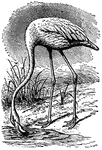
Flamingo
Flamingos are gregarious wading birds in the genus Phoenicopterus and family Phoenicopteridae. They…

Rainbow Smelt
The Rainbow Smelt (Osmerus mordax) is a North American fish in the Osmeridae family of smelts named…

Vermilion Snapper
The Vermilion Snapper (Rhomboplites aurorubens) is a North American and Atlantic fish in the Lutjanidae…

Narcissus
Narcissus is the botanic name for a genus of mainly hardy, mostly spring-flowering, bulbs in the Amaryllis…

Bulbous Buttercup
Ranunculus bulbosus, commonly known as St Anthony's turnip or bulbous buttercup, is a perennial weed…

Lamium Album
Lamium album (White Deadnettle) is a flowering plant in the family Lamiaceae, native throughout Europe…
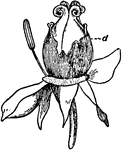
Peony Bud
Paeonia) is the only genus in the flowering plant family Paeoniaceae. They are native to Asia, southern…

Foxglove
An illustration of: 1, Coralla cut open showing the four stamens; 2, Unripe fruit (lengthwise); 3, ripe…
English Horn
The cor anglais, or English horn, is a double reed woodwind musical instrument in the oboe family.It…
English Horn
An illustration of an 18th century English Horn. The cor anglais, or English horn, is a double reed…

Hittite Women
An illustration of two Hittite women sitting. The Hittites were an ancient Anatolian people who spoke…

Gentleman and Wife
An illustration of a gentleman and his wife. A gentleman is a man of a good family.

Tiger Rockfish
The Tiger Rockfish (Sebastes nigrocinctus) is a rockfish in the Scorpaenidae family of scorpionfish.
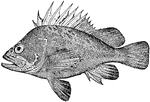
Quillback Rockfish
The Quillback Rockfish (Sebastes maliger) is a rockfish in the Scorpaenidae family of scorpionfish.

Pea Crab
The pea crab is a small crab in the family Pinnotheridae that lives symbiotically in oysters, clams,…
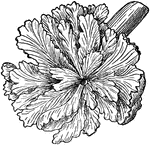
Wood Rose
"Wood-rose, a remarkable vegetable excrescence, resembling a flower with radiating corrugated petals…
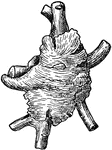
Wood Rose
"Wood-rose, a remarkable vegetable excrescence, resembling a flower with radiating corrugated petals…

False Rue Anemone
The plant and fruit of the False Rue Anemone (Isopyrum biternatum). It is a flowering plant in the Ranunculaceae…
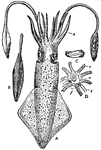
European Squid
The European Squid (Loligo vulgaris) is a large squid belonging to the family Loliginidae. It occurs…
